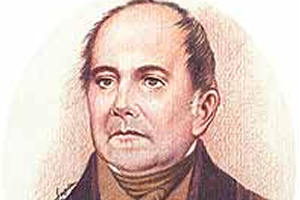First inhabitants
Archeological research has proved that there is records of human life in this area of the country that date back roughly 11,000 years. The most important cultures that lived in the Greater North are:
– The Chinchorro Culture (6000 – 2000 B.C.): they lived from the Peruvian port of Ilo to Antofagasta in Chile during the Archaic period. They were organized in groups of approximately 30 to 50 people, who were apparently related to each other. They were fishermen, guanaco hunters and mollusk gatherers. Their characteristic trait was mummifying their dead. This process consisted of extracting muscles and organs, which were replaced with plants and feathers, among other natural materials. Next, the body was covered in a layer of clay and a wig made of human hair was placed atop its head. This culture’s art was almost exclusively based on the mummies’ funeral trousseau, including turbans and fabrics.
– Faldas del Morro (Morro foothills) Culture (900 B.C. – 400 A.D.): this indigenous people lived in the far north of Chile during the farming-pottery phase. The first site that was discovered pertaining to this culture was a cemetery at the foot of the Morro de Arica (hence, their name). They lived in small villages located on terraces to shield themselves from the wind. Their economy combined farming with hunting and gathering of marine and land species. Their deceased were buried in graves horizontally, with their limbs folded. Their art was focused on funeral rites and offerings and the confection of fabrics with llama wool.
– Cabuza Culture (500 – 1000 A.D.): this culture settled between the valleys of the far north of Chile (Camarones) and the south of Peru (Ilo) during the farming-pottery period. They built villages near rivers; their homes were rectangular with stone foundations and the walls were made of reeds and totora tied together with ropes. Their economy was mainly based on agriculture. They incorporated new work techniques and more complex irrigation systems, which allowed them to grow a great amount of plants. They also made gold and silver pendants and rings with shapes of llamas and introduced new techniques for making fabrics and bags known as chuspas. Their dead were buried in cylindrical graves with the bodies in a fetal or crouched position. They were wrapped in wolledn shirts or unkus, tied-up with totora ropes and accompanied by mortuary offerings.
– Pica or «Pica-Tarapaca» Culture (900 – 1532 A.D.): they lived in the Atacama desert in the land between the Camiña valley and the mouth of the Loa river during the farming-pottery period. They were politically organized in a feudal lordship; one authority would organize the workers within a certain territory. Their economic activity was based on farming that took place at oases and ravines. Their main crops were corn and quinoa. They also gathered fruit from algarrobo and tamarugo trees, hunted wild animals and exploited marine resources. Their most important artistic manifestation was cave art (paintings and engravings executed on the rocky surface of caves), which represented different aspects of domestic and ceremonial life. In addition, they made thick blankets and polychromatic fabrics, worked in leather and weaved baskets. Their deceased were buried in individual graves, although some contained more than one person.
– Arica Culture (1000 – 1532 A.D.): they lived in the western vallers that go from Mollendo (Peru) to Taltal (Chile) during the farming-pottery period. They lived in a group of lordships or curacazgos, direct descendents of the Cabuza. Their economy was sustained on farming and gathering marine resources. Their main handicraft was pottery, which was done in several different styles, such as San Miguel (red or black on white designs) and Pocoma-Gentilar (red, black and white over a natural background). They also worked in copper, as well as gold and silver, to make ornaments.
Popular tradition
Before the Spanish arrived in 1536, the inhabitants of the Greater North already showed great devotion for religious festivities. Once the catholic faith was introduced, religious celebrations and rites got mixed together, making way for a rich cultural tradition.
Presently, one of the most important and well-known festivities in this area is the celebration held for the Virgen del Carmen de La Tirana (Our Lady of Mount Carmel of La Tirana). La Tirana is a small town of no more than one thousand residents located 72 km from Iquique, in the heart of the Atacama desert. The festivities are held between July 14 and 16 and they attract thousands of faithful believers from all over the country. The main participants are the troupes of dancers that dance throughout the entire town for the duration of the festival. The dancers dress in colorful outfits and large masks of altiplanico (high plains) origin. The Virgin is dolled-up with silk and jewelry and the town is lit-up with thousands of candles.







